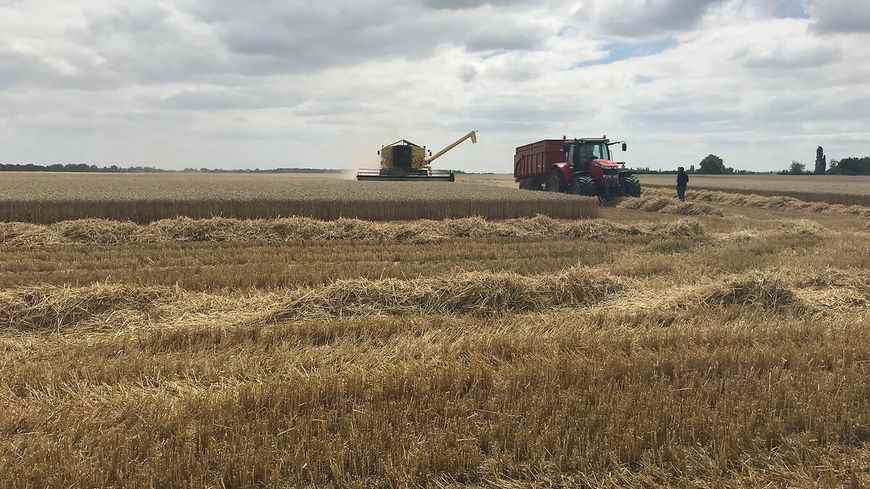The agricultural sector is both dependent on the vagaries of the weather, but also on the global geopolitical context which influences the prices of agricultural products. The autumn harvests are in progress, even coming to an end in Côte-d’Or. What are the initial findings and what are the prospects for our farmers? We take stock with Victor Moulins, the market manager at Dijon Céréales.
What is the impact of drought on harvests in Côte-d’Or?
Since April and May and the cereal growth and filling phase, there has been little water and therefore a drop in yields and a drop in the harvest, which should be around -15% this year.
Does this concern all the harvests of the year or only the autumn harvests?
This is an overall drop in all harvests, winter crops such as wheat, barley and rapeseed are doing a little better since the production cycle is longer. On the other hand, for autumn crops which are harvested from now on, such as corn, sunflower and soybeans, the drop in quantity is much greater since these crops suffered greatly from the heat wave periods of July and August. .
When you talk about a 15% impact, does that also concern prices?
The 15% impact is in harvest potential compared to last year. Cereal and oilseed prices rose sharply following the war that broke out between Russia and Ukraine at the end of February. Since then, new harvests have arrived and export corridors have been set up. As a result, today, at the moment I am speaking to you, prices have returned to pre-war levels. There is this geopolitical tension which has a great impact on the markets, but there is also a real fundamental tension since, until now, we have had an increase in cereal consumption in the world with production which is strongly affected by climatic incidents. .
Are your producers now changing their culture to adapt to this context of inflation and war in Europe or has it not really changed things here?
To maintain biodiversity and also maintain yield potential, you have to alternate between crops. And it’s not necessarily so easy to change the crop rotation. We talked about the cereal markets which are highly volatile and which remain at relatively high levels. But this is also the case for the fertilizer market, which is very, very important. In addition to the price, there is potentially a risk on the availability of essential fertilizers to maintain yield potential. This concern over the availability of fertilizers can actually lead farmers to modify their rotation a little, since fertilizer has a strong impact on the cost of production of each crop.
For a cooperative like Dijon Céréales, is a price increase a good thing?
It depends on what hike it is. A rise in cereal markets is necessarily positive. A rise in the price of fertilizers and other costs is not positive since it strongly compresses the economic results of our farms. We try to secure the farmer’s margin and therefore supply the local and international market.
The agricultural sector also affected by the rise in energy prices
For Dijon Céréales, the rise in energy prices does not go unnoticed either, since it directly affects transport, but not only. “We are much more affected on the gas and transport costs part. Indeed, our job is to collect cereals from farmers, bring them up to standard, so sort them, which consumes energy, electricity, drying them for the fall crops, which consumes gas and then transporting them, which consumes diesel. So effectively, our transport costs will also rise sharply for this year.” recognizes Victor Moulins, while specifying that the company does everything to preserve farmers’ margins in order to secure production.
